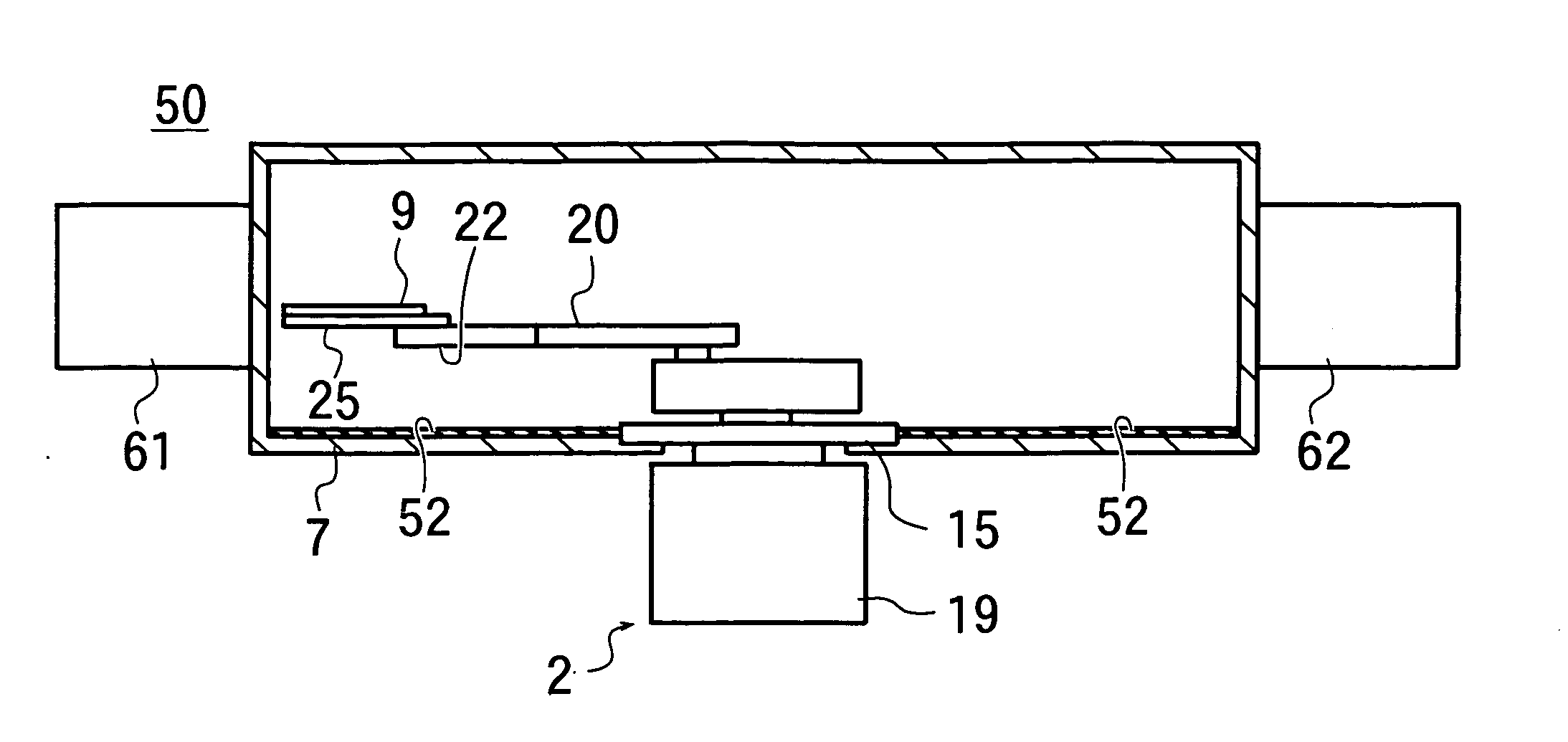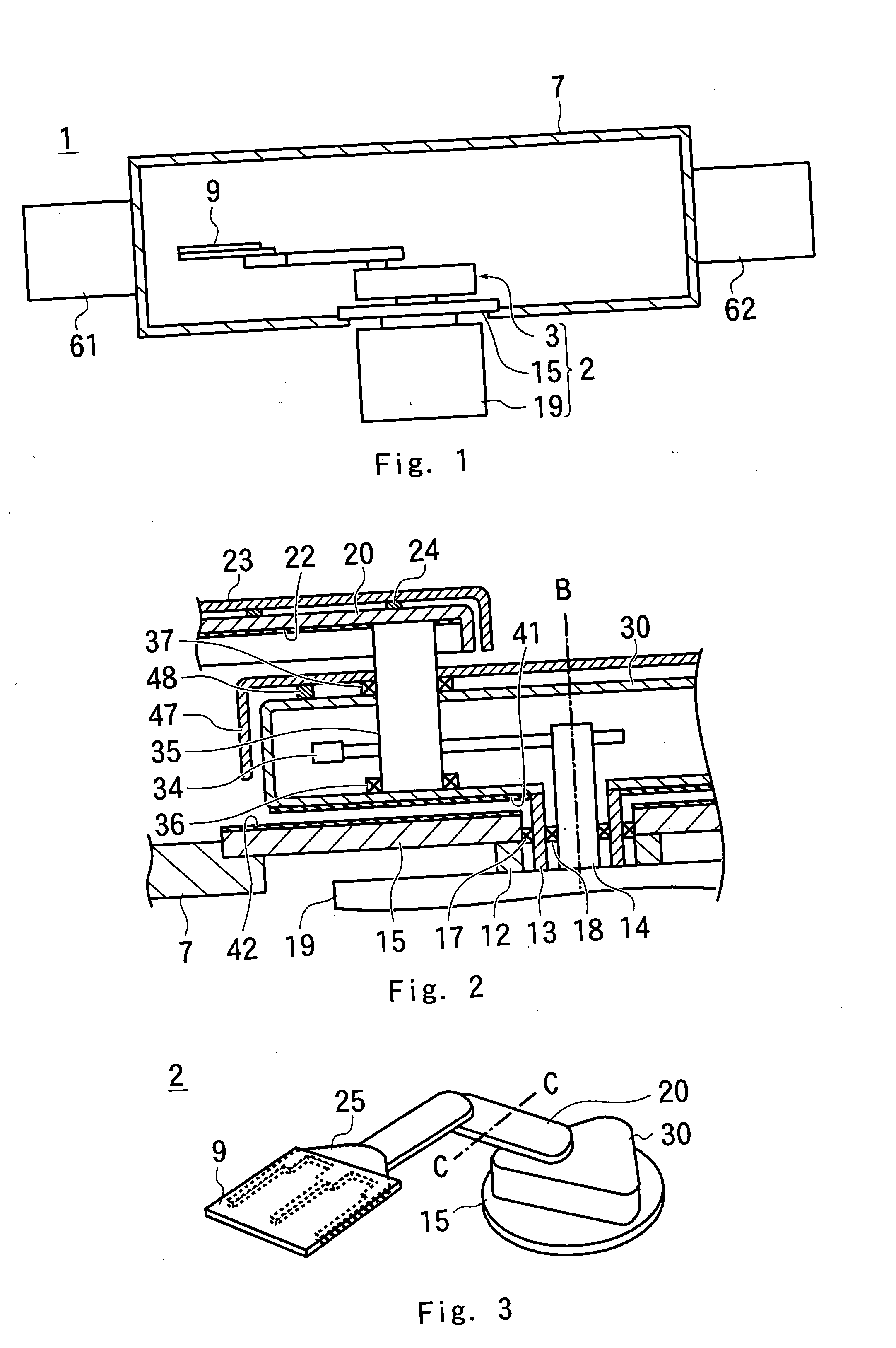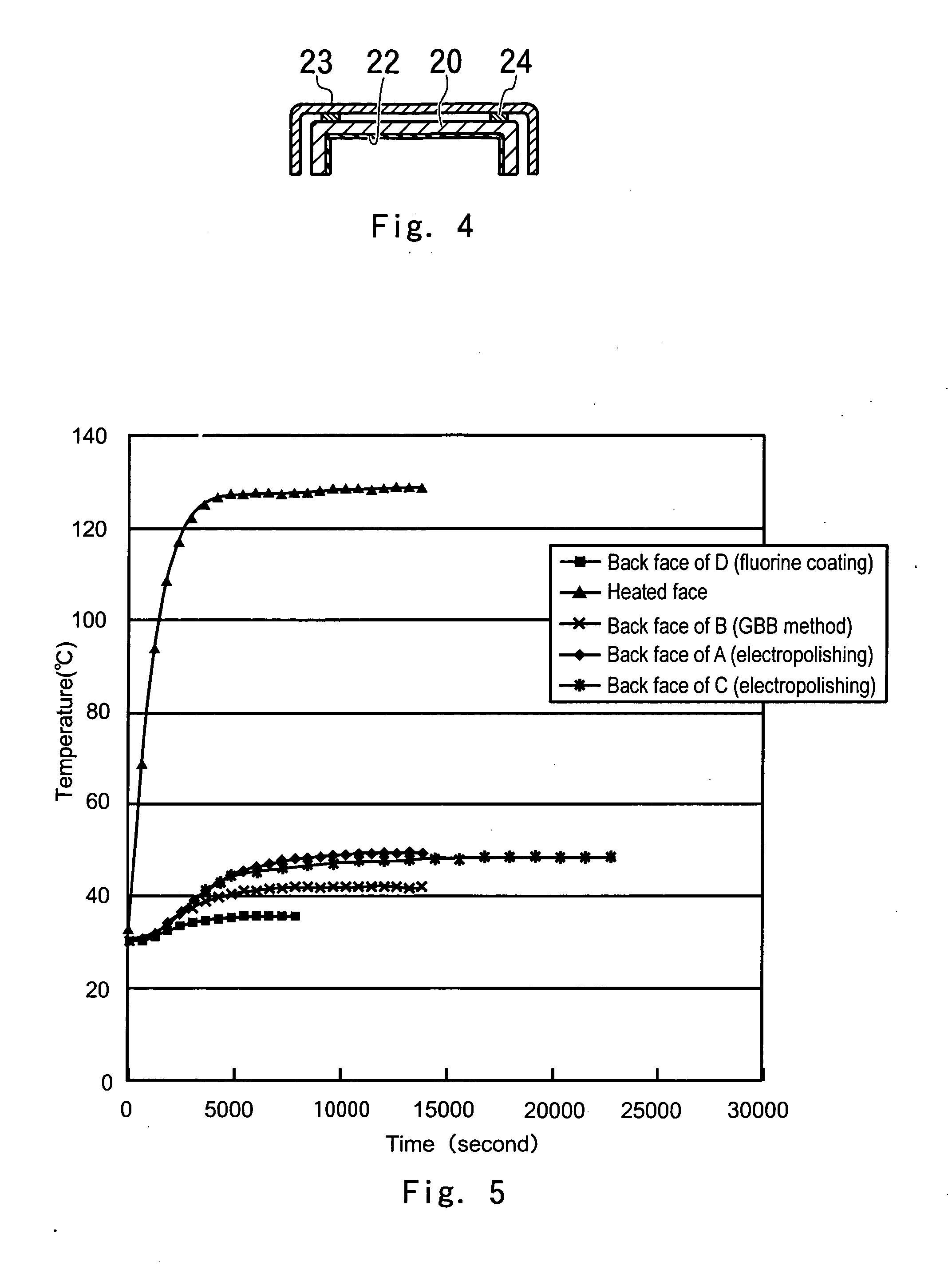Transport robot and transport apparatus
a technology of transport robots and transport apparatus, which is applied in the field of transport robots, can solve the problems of high cost, inconvenient use of solid-lubricated bearings, and accumulation of received data from the substrate, and achieve the effects of reducing maintenance frequency, reducing operational errors, and reducing temperature rise and evaporation
- Summary
- Abstract
- Description
- Claims
- Application Information
AI Technical Summary
Benefits of technology
Problems solved by technology
Method used
Image
Examples
Embodiment Construction
[0058] Reference numeral 1 in FIG. 1 shows an example of a transport apparatus of the present invention, and the transport apparatus 1 has a transport robot 2 and a vacuum chamber 7.
[0059] The transport robot 2 has a plate-shaped base flange 15, a motor portion 19 (driving system) for generating driving force that is located on one surface side of the base flange 15, and a transport system 3 for moving a substrate described below with the driving force generated by the motor portion 19, the transport system 3 being located on the other surface side of the base flange 15.
[0060] A through hole having a smaller diameter than that of the planer shape of the base flange 15 is formed at the bottom wall of the vacuum chamber 7. The transport robot 2 is attached such that the transport system 3 is disposed inside the vacuum chamber 7, and the motor portion 19 is disposed outside the vacuum chamber 7, with the rim portion of the base flange 15 closely contacted with the area around the thr...
PUM
 Login to View More
Login to View More Abstract
Description
Claims
Application Information
 Login to View More
Login to View More - R&D
- Intellectual Property
- Life Sciences
- Materials
- Tech Scout
- Unparalleled Data Quality
- Higher Quality Content
- 60% Fewer Hallucinations
Browse by: Latest US Patents, China's latest patents, Technical Efficacy Thesaurus, Application Domain, Technology Topic, Popular Technical Reports.
© 2025 PatSnap. All rights reserved.Legal|Privacy policy|Modern Slavery Act Transparency Statement|Sitemap|About US| Contact US: help@patsnap.com



